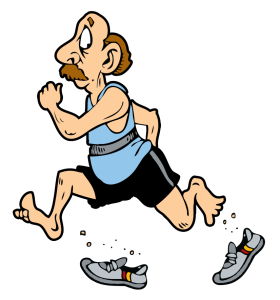Toning or fitness shoes are considered to those shoes that are manufactured unstable with designs such as ‘wobble boards’ or a rocker bottom shoe. The purpose of this design is to create an instability problem so that the muscles of the legs have to work harder to compensate. As a consequence it is alleged that this give an additional workout or ‘tone up’ when using the footwear. That is how the shoes got the name ‘toning’. This niche of the market was originally made popular by the MBT (Masai Barefoot Technology) footwear and then followed later by the Skechers Shape Ups and The Reebok Easy Tone shoes.
What typified the toning shoes niche initially were the highly exaggerated and hyped up statements that were made for the benefits of the muscles working harder due to the unstable design of the shoes. There were advertisements that the shoes could give you a better toned up ‘butt’ as a result of wearing the shoes. There were claims that the extra muscular work could help you lose additional weight when you exercised and there were even bizarre claims that these shoes could help solve to the obesity epidemic if everyone started wearing them! There were claims about how they could improve the blood circulation as well as varicose veins. Endorsements were given by a number of celebrities which also helped hype up the benefit of these shoes.
The Federal Trade Commission (FTC) in the USA as well as the American Council of Fitness (ACE) took a much closer look at the claims being made. Firstly the ACE did a well designed study to test the claims and they found none of them to be supported by the evidence. The study found there was no increase in muscle activity while using the shoes and also there was no increased expenditure of calories when using them compared to a conventional running shoe. However, other studies have found minor changes in muscle activity while some others have not found any differences when using the shoes. The scientific evidence did not support what the marketing hype was claiming. Both Skechers and Reebok were investigated by the FTC for the claims and both companies agreed a multi-million dollar settlement.
I am not sure where the toning shoe sector will head now after all this. The shoes do possibly have some uses in some clinical conditions. For example, like a number of other clinicians, I see them being useful things like painful hallux rigidus. Some Chiropractors are trialling them in people with chronic postural and low back problems due to the slight change that they create in the gait. Some athletes may also get a benefit from them with occasional use in order to use the lower limb muscles in a different way for short periods of time.

